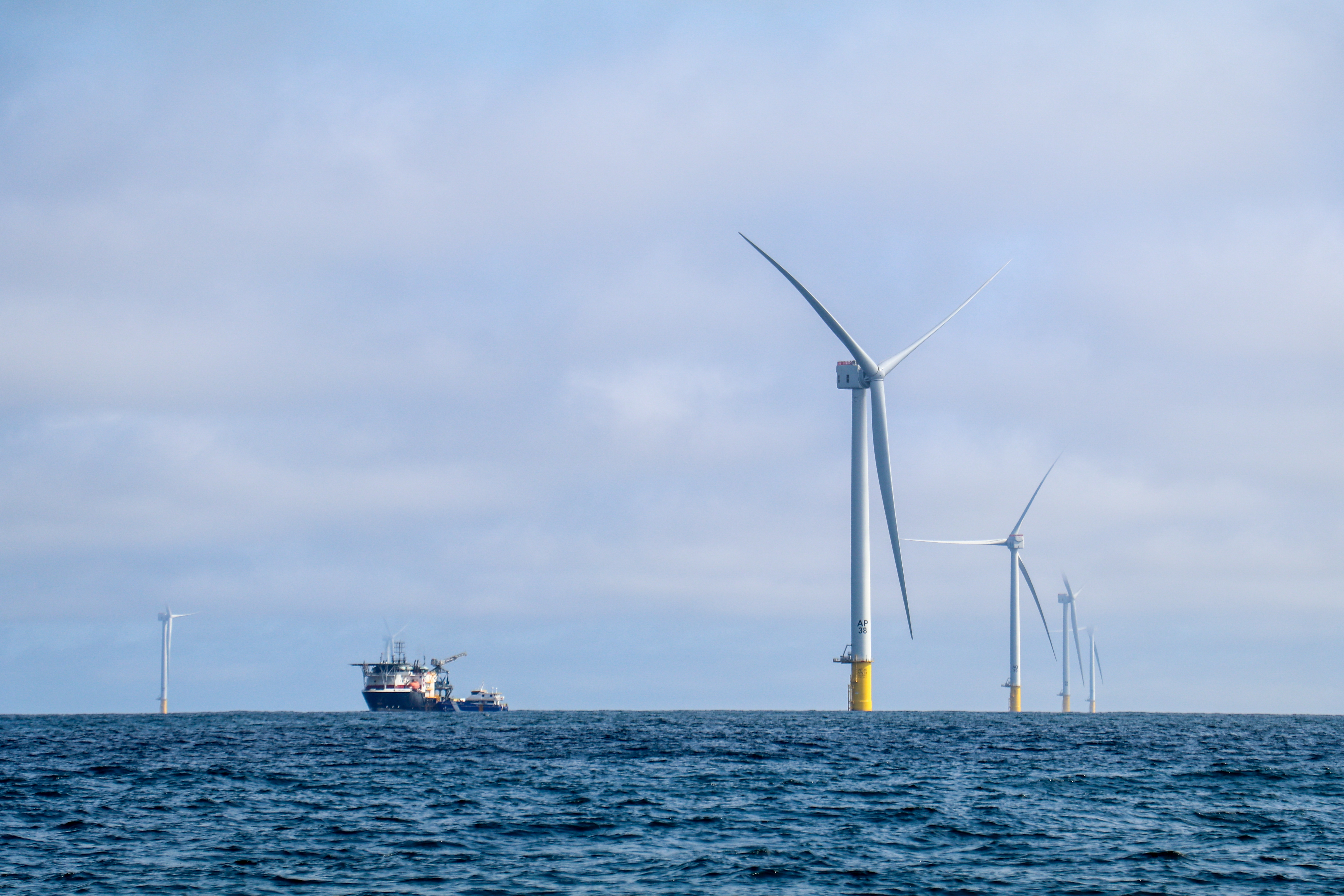Vineyard Wind brings more turbines online, expects to complete construction this year – WBUR

Vineyard Wind 1 Project Status Report: Advancing Sustainable Development Goals
Executive Summary: Progress and Alignment with Global Goals
The Vineyard Wind 1 project, a critical component of Massachusetts’ clean energy strategy, is making measurable progress toward full operational capacity. As of the third quarter of 2025, the project is actively contributing to several United Nations Sustainable Development Goals (SDGs), most notably SDG 7 (Affordable and Clean Energy) and SDG 13 (Climate Action). This report details the project’s current status, operational milestones, and its strategic importance in the context of regional and global sustainability targets.
Project Status and Contribution to SDG 7: Affordable and Clean Energy
The primary objective of the Vineyard Wind 1 project is to increase the share of renewable energy in the regional power grid, directly supporting the targets of SDG 7. A quarterly investor report from Iberdrola, a parent company of project partner Avangrid, confirms significant advancement.
- Total Planned Turbines: 62
- Turbines Fully Installed: 23
- Turbines Exporting Power: 17
- Current Energy Output: The project is exporting approximately 30% of its total expected capacity.
- Projected Completion: Construction is scheduled for completion by the end of 2025, with full commercial operation expected at that time.
This progress represents a tangible step in diversifying the energy mix and reducing reliance on fossil fuels, a core tenet of SDG 7.
Operational Milestones and Challenges
The project’s development path highlights both achievements and the inherent challenges in pioneering large-scale sustainable infrastructure, a key aspect of SDG 9 (Industry, Innovation, and Infrastructure).
- February 2024: Initial power generation was achieved, with five turbines delivering 68 megawatts to the grid.
- Summer 2024: Operations were temporarily halted following a component failure (a shattered turbine blade), prompting investigations to ensure long-term operational safety and resilience. This incident underscores the importance of robust engineering and safety protocols in sustainable infrastructure projects.
- January 2025: Power production resumed from a single turbine after meeting stringent safety conditions.
- July 2025: Operations scaled up, with 17 turbines online and exporting power.
Strategic Importance for SDG 13: Climate Action
Vineyard Wind 1 is a cornerstone of the state’s climate action plan. By generating large-scale, zero-emission electricity, the project directly contributes to the reduction of greenhouse gases, which is the central aim of SDG 13. The project’s advancement is critical as Massachusetts reevaluates its climate and emissions mandates amidst challenging economic and political conditions for renewable energy.
Partnerships and Future Outlook
The project is a joint venture between Avangrid and Copenhagen Infrastructure Partners, exemplifying SDG 17 (Partnerships for the Goals), which emphasizes collaboration between public and private sectors to achieve sustainable development.
- The project is currently the only offshore wind farm under construction in the state’s pipeline.
- The procurement process for additional offshore wind projects has been postponed, indicating hurdles in the broader energy transition.
- The delayed New England Clean Energy Connect hydro project is another key element of the state’s clean energy plan, expected to be completed by year-end.
While the progress of Vineyard Wind 1 is a positive development for achieving SDGs 7 and 13, the delays and challenges faced by it and other regional projects illustrate the complexities of executing a comprehensive transition to sustainable energy and infrastructure.
1. Which SDGs are addressed or connected to the issues highlighted in the article?
SDG 7: Affordable and Clean Energy
- The article’s central theme is the development of the Vineyard Wind 1 offshore wind project, a major source of renewable energy. It directly discusses the generation of “cleaner energy” through wind turbines, which is the core focus of SDG 7. The text mentions the project is “exporting power” and is part of Massachusetts’ “pursuit of cleaner energy generation.”
SDG 9: Industry, Innovation and Infrastructure
- The construction of a large-scale offshore wind farm represents a significant investment in sustainable and resilient infrastructure. The article details the construction progress, such as “at least 40 turbines have been installed,” and challenges, including a “shattered” wind blade, which relate to the quality and resilience of this new infrastructure.
SDG 13: Climate Action
- The project is explicitly framed as a key component of Massachusetts’ strategy to combat climate change. The article states that the state’s focus on offshore wind is driven by its need to meet “climate and emissions mandates, plans and goals,” directly linking the project to climate action policies and measures.
SDG 17: Partnerships for the Goals
- The article highlights the collaborative nature of the Vineyard Wind project. It is described as a “joint venture between Avangrid and Copenhagen Infrastructure Partners” and involves the state government, as evidenced by announcements from “Gov. Maura Healey.” This public-private partnership is essential for implementing large-scale sustainable development projects.
2. What specific targets under those SDGs can be identified based on the article’s content?
Target 7.2: Increase substantially the share of renewable energy in the global energy mix.
- The entire article is about increasing the capacity of renewable energy. The Vineyard Wind 1 project, with its “planned 62 turbines,” is a direct effort to increase the proportion of wind energy in the region’s power supply, contributing to this target. The article notes it is part of the state’s “pursuit of cleaner energy generation.”
Target 9.4: Upgrade infrastructure and retrofit industries to make them sustainable, with increased resource-use efficiency and greater adoption of clean and environmentally sound technologies.
- The development of an offshore wind farm is a prime example of upgrading energy infrastructure with clean technology. The project replaces or supplements traditional fossil fuel-based energy generation with a sustainable alternative, directly aligning with the goal of making infrastructure more sustainable.
Target 13.2: Integrate climate change measures into national policies, strategies and planning.
- The article explicitly mentions that the offshore wind initiative is a result of Massachusetts’ strategic decision to meet its “climate and emissions mandates, plans and goals.” This demonstrates the integration of climate change mitigation measures (promoting renewable energy) into state-level policy and planning.
Target 17.17: Encourage and promote effective public, public-private and civil society partnerships.
- The project’s structure as a “joint venture between Avangrid and Copenhagen Infrastructure Partners,” operating within a framework supported and monitored by the state government (“Gov. Maura Healey”), exemplifies the kind of public-private partnership this target aims to promote for achieving sustainable development.
3. Are there any indicators mentioned or implied in the article that can be used to measure progress towards the identified targets?
Indicator 7.2.1: Renewable energy share in the total final energy consumption.
- The article provides several quantitative data points that serve as direct measures for this indicator. These include:
- The total planned capacity: “62 turbines.”
- Current operational capacity: “17 of its planned 62 turbines are already exporting.”
- Power output: “68 megawatts of power flowing from five offshore wind turbines” (in a past update).
- Percentage of expected output: “exporting 30% of the energy expecting to reach full [commercial operation date].”
Indicator 9.4.1: CO2 emission per unit of value added.
- While not explicitly stating CO2 numbers, the article implies progress on this indicator by focusing on a zero-emission energy source. The entire project is designed to generate power without producing CO2, thereby lowering the overall emissions per unit of energy for the state. The project’s existence as part of the state’s “climate and emissions mandates” is an implicit reference to this goal.
Indicator 13.2.1: Number of countries that have communicated the establishment or operationalization of an integrated policy/strategy/plan which increases their ability to adapt to the adverse impacts of climate change, and foster climate resilience and low greenhouse gas emissions development.
- The article describes Massachusetts’ state-level strategy, which functions as a sub-national plan. The text refers to the state’s decision to pursue “cleaner energy generation mainly on offshore wind” to meet its “climate and emissions mandates, plans and goals.” This established plan is a clear measure of progress for this indicator at a sub-national level.
Indicator 17.17.1: Amount of United States dollars committed to public-private and civil society partnerships.
- The article does not provide specific dollar amounts but clearly identifies the existence and nature of the partnership. It describes the project as a “joint venture between Avangrid and Copenhagen Infrastructure Partners,” which implies a significant financial commitment. The scale of the project (“62 turbines”) further suggests a substantial investment, which is a qualitative measure for this indicator.
4. Table of SDGs, Targets, and Indicators
| SDGs | Targets | Indicators |
|---|---|---|
| SDG 7: Affordable and Clean Energy | 7.2: Increase substantially the share of renewable energy in the global energy mix. | 7.2.1 (implied): Number of installed and operational turbines (17 of 62), power output (68 MW mentioned previously), and percentage of expected energy being exported (30%). |
| SDG 9: Industry, Innovation and Infrastructure | 9.4: Upgrade infrastructure and retrofit industries to make them sustainable… with greater adoption of clean and environmentally sound technologies. | 9.4.1 (implied): The development of a large-scale offshore wind farm as a clean energy infrastructure project designed to reduce CO2 emissions from the energy sector. |
| SDG 13: Climate Action | 13.2: Integrate climate change measures into national policies, strategies and planning. | 13.2.1 (implied): The existence of Massachusetts’ state-level policy and plan to meet “climate and emissions mandates” through offshore wind development. |
| SDG 17: Partnerships for the Goals | 17.17: Encourage and promote effective public, public-private and civil society partnerships. | 17.17.1 (implied): The formation of a “joint venture between Avangrid and Copenhagen Infrastructure Partners” in collaboration with the state government to build the wind farm. |
Source: wbur.org

What is Your Reaction?
 Like
0
Like
0
 Dislike
0
Dislike
0
 Love
0
Love
0
 Funny
0
Funny
0
 Angry
0
Angry
0
 Sad
0
Sad
0
 Wow
0
Wow
0











































































